
Issue 057
December 2009
There’s something unmistakably different about heavyweight fights and fighters. It isn’t just the fact they’re the biggest and the strongest. There’s something indefinably special about
two gigantic men trying to knock each other out that seems to resonate more with fans than, say, two highly-skilled featherweights.
Join us as we celebrate the biggest, most talked about, and spectacular division in combat sports.
Generally speaking, the heavyweight division was the ‘glamour division’ in boxing for most of the 20th century. Names like Dempsey, Marciano, Ali and Tyson were well-known to pretty much everyone, even those with a passing interest in sports. Strangely enough, there’s never really been the same overwhelming fascination with the heavyweight division in MMA. In the early days of the UFC, Ken Shamrock was undoubtedly one of the biggest stars but the man with the longest-lasting legacy was a skinny dude in pajamas – Royce Gracie. Western fans may have loved Pride FC’s vaunted mid-’90s heavyweight division but it was a 180lb former pro wrestler – Kazushi Sakuraba – who was selling out major arenas on a regular basis.
For most of the last decade, the 205lb weight class has been MMA’s ‘glamour division’. Right now, driven forward by the UFC and mainstream media focus on men such as Fedor Emelianenko, the sport’s heavyweight division looks to finally be entering a golden era of massive fights, immense publicity and unheard of popularity.
The heavyweights are growing in popularity, in size (quite literally, it seems) and overall importance. These are definitely good days to be a fan of some good old-fashioned clashes of the titans.
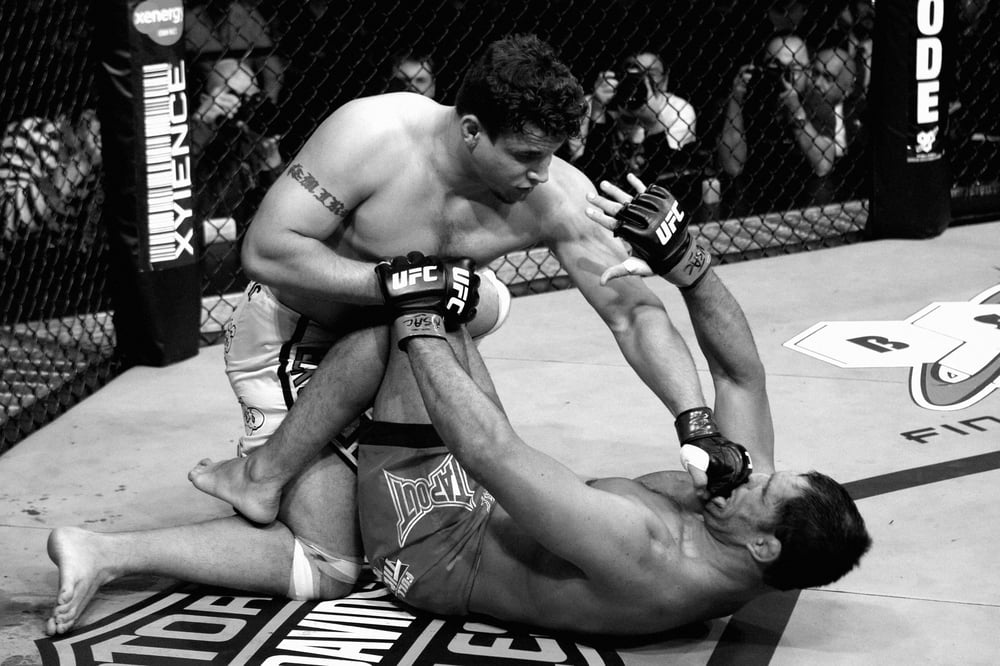
Size Matters
On November 15, 2008, something very significant happened – actually, two very significant things happened. Firstly, Brock Lesnar (in only his fourth MMA fight) Donkey Kong’ed the legendary Randy Couture to win the UFC heavyweight title. Secondly, Lesnar’s victory broke the Internet.
MMA sites and forums were overrun with people complaining about Lesnar, who made Couture look positively Lilliputian, and his “unfair” victory. Mostly, this was down to people aggrieved that the behemoth Lesnar (who they still considered a ‘fake pro wrestler’) could take out the champ. Beneath the surface of the overblown anguish, there lurked some very real talking points. At a solid 265lb (officially at least – he was actually 277lb at bell time) Lesnar was just far, far too big for a ‘small’ heavyweight like the 220lb Couture.
Had Lesnar’s win ushered in a new era of monster heavyweights and signaled the beginning of the end for the smaller heavyweights? Was the next step in an ever-evolving sport the upcoming dominance of man-mountains, who would cut weight to make 265lb and rehydrate back up toward 280lb? Was it time to add a cruiserweight class up to, say, 225lb? Or should these emerging giants battle each other at the already-existing (though little used) 265lb+ super heavyweight division?
Anyone weighing in at 207lb and above is deemed a heavyweight in MMA, and for a long time ‘small’ heavyweights had prospered. Even while significantly outweighed, the likes of Randy Couture, Mirko Cro Cop and Fedor Emelianenko have slain a variety of giants, ogres and monsters. Couture beat a pair of 300lb’ers, Tony Halme and Steven Graham, way back at UFC 13. Averaging 225lb for his heavyweight fights, Couture dominated 260lb+ Tim Sylvia for his myth-making comeback title win and successfully defended his belt at 229lb against Gabriel Gonzaga (252lb).
Mirko Cro Cop averaged somewhere in the 220s but has finished much larger men, such as Josh Barnett (255lb), Aleksander Emelianenko (259lb) and Ron Waterman (280lb). Fedor Emelianenko, long considered one of the greatest heavyweights in the sport, averages around 235lb but has beaten the titanic likes of Hong Man Choi (315lb), Mark Hunt (280lb) and Sylvia.
But, as Lesnar proved, though these and other smaller heavyweights have been impressive, things are starting to look a bit different in late 2009. The heavyweight division itself, particularly in the UFC, is enjoying a resurgence in fan interest and fighter quality that’s put the big men firmly in the spotlight. And that light is resting on some of the best big men to ever step in the cage. But have things changed quite as suddenly as they seem?
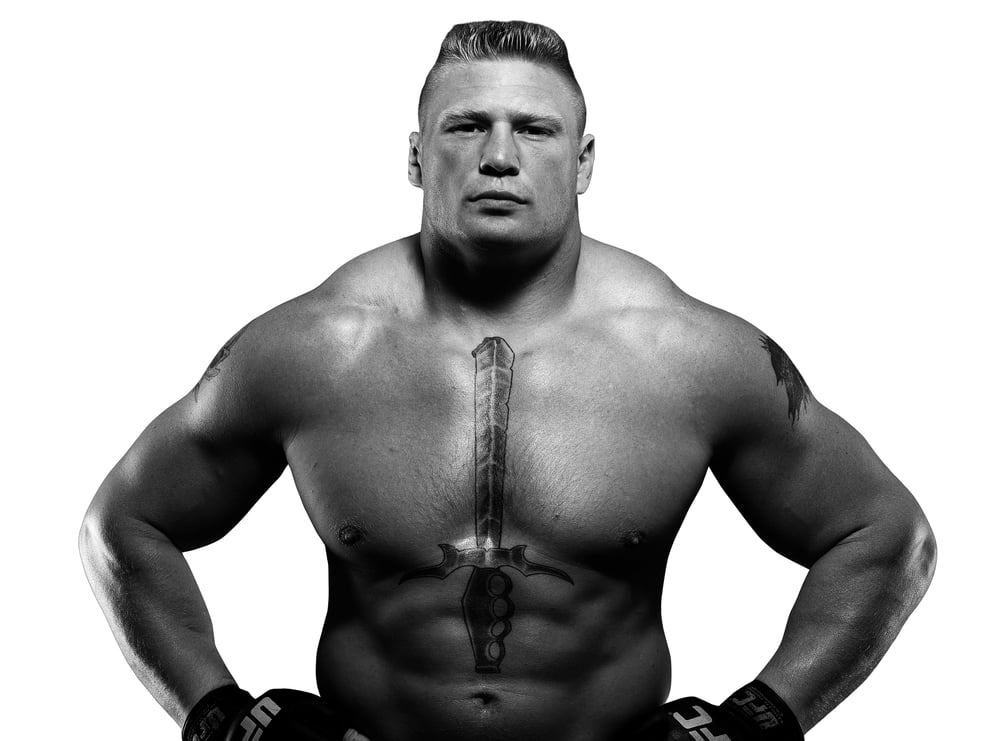
The Numbers Matter Too
Lesnar-Couture was a very graphic example of the massive size discrepancies that can exist within the very broad heavyweight class. But is the rising concern about gigantic heavyweights and monstrous weight disparities really justified? I looked at a random sample of 60 heavyweight fights that took place in major MMA promotions between September 2006 and September 2009 to see just how big the weight differences really are, whether this has suddenly changed in the last year couple of years and whether heavyweights really are getting bigger.
Based on this sample, the average weight discrepancy in heavyweight fights is 16lb. While a significant number, it’s a long, long way removed from the 45lb+ differences (like Lesnar vs Couture or James Thompson vs Hidehiko Yoshida) that are actually quite rare but, perhaps because of their visual impact, really stick in the memory. Looking at the dates, there’s no major upward trend in significant (30lb and up) weight differences in the last year or two. Overall, there has been a slight increase in the average weight difference (about a pound since the start of 2008) but it’s hardly a monumental shift.
Fighters do seem to be getting slightly bigger (especially some of the younger heavyweights such as Todd Duffee), but not by much. Most of the really huge fighters weighing in at 260lb+ (there were 13 in the sample) have been around for a few years. Just three – Lesnar, Brett Rogers and Shane Carwin – have hit the big time since the beginning of 2008, and all three cut to make 265lb.
All the fighters in the sample (75 of them, as some had multiple appearances) averaged out at 244lb apiece, making Frank Mir (consistently north of 250) one of the bigger heavyweights around while Cheick Kongo (his UFC 107 opponent) is actually on the small side, at just over 230lb, even though he is a chiseled and statuesque 6’4”.
If the average weight difference is 16lb and the average heavyweight is 244lb, there seems to be a pretty good case for a 225lb cruiserweight division to bridge the gap between the 205lb fighters at light heavyweight and the 240lb’ers at heavyweight.
At UFC 102, as Couture faced Antonio Rodrigo Nogueira (weight difference: a measly 11lb) commentator Joe Rogan said “if ever there was a case for a 225lb weight class, that [Lesnar-Couture] was it.” Not really. It doesn’t make much sense to mess around with weight classes due to the rare instances where there is a huge weight difference. The real case for a cruiserweight class is that without one, those 220lb heavyweights are greatly outweighed, not by the monsters like Lesnar, but by the 240 – 250lb’ers who are becoming commonplace.
The numbers don’t seem to back up the idea that in order to be a competitive heavyweight, someone has to be of Lesnar-esque proportions (particularly as few human beings of anywhere near that size are anything like as athletic as he is). Indeed, in the 60-fight sample, the smaller man won 54% of the fights.
In addition, one of the best of a young crop of heavyweights out there, Cain Velasquez, is below average weight, coming in at a little under 240lb. And one of the reasons for Couture’s history of success against bigger men is because, comparatively, he’s been so much quicker at heavyweight. At this stage, a super heavyweight class would more likely be populated by bloated manatees than super-athletes like Lesnar and Carwin anyway.
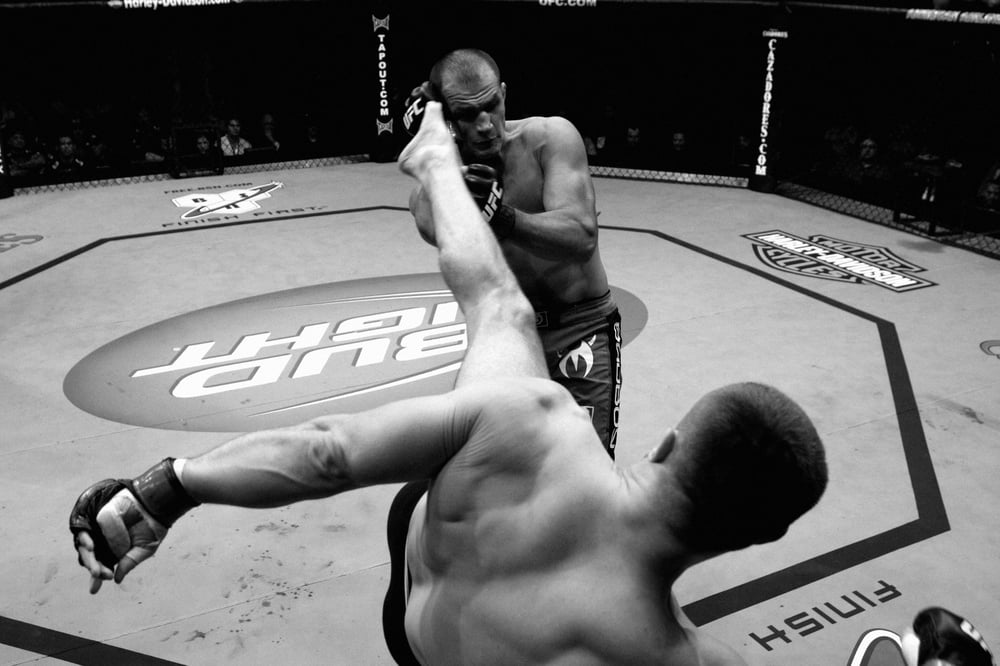
Giants & Monsters – An MMA Tradition
Gigantic fighters have been a part of MMA since the very early days. Few who saw morbidly obese blubber-mountain Emmanuel Yarborough lose to Keith Hackney at UFC 3 back in 1994 will ever forget it. Other giant notables include 6’8”, 300lb Alaskan brawler Paul Varelans or the mechanical Brazilian Ricardo Morais (a muscle-bound 6’7”, 280lb).
Mark Kerr was among the most feared men in MMA history during his 1997 – 2000 run, where he stood 6’3” and weighed 250lb+. ‘Big Cat’ Tom Erikson’s on-off fighting career started way back in 1996 but due to his size (6’3”, 280lb), strength and wrestling ability he was given a wide berth by former UFC owners SEG for fear he’d prove unbeatable, but unable to pull in fans due to his dull fighting-style.
After his utterly embarrassing 9-second KO loss to ancient boxer Ray Mercer, the 6’8” Tim Sylvia’s reputation has taken more of a pounding than ‘the Maine-iac’ ever has inside the cage. But the fact remains; the former UFC heavyweight champion has been a very good fighter who, thanks to his sheer size and awkwardness, has put together plenty of wins over good heavyweights. These days 6’11” Dutchman Semmy Schilt is far more concerned with his K-1 career, but he faced some of the very best in MMA (Fedor, Josh Barnett and Antonio Rodrigo Nogueira all beat him), had some good wins and was surprisingly dangerous on the mat.
Of course, no look at giants in MMA would be complete without a quick, slightly guilty, glance at some of the human oddities that made up such a major part of the Pride FC and K-1 Dynamite carnivals. Giant Silva was, well, a 7’2” giant who made Heath Herring look like a small child in their 2003 comedy classic. Korean ‘Techno Goliath’ Choi Hong Man had the misfortune to fight Fedor and Cro Cop. Finally, no-one could ever forget the original, and still the most entertaining of them all: ‘the Beast’, Bob Sapp (6’5” 340lb). A legitimate celebrity in Japan during his heyday, Sapp’s in-ring antics are legendarily goofy yet, if he’d ever dedicated himself to it properly, he might have made a decent fighter.
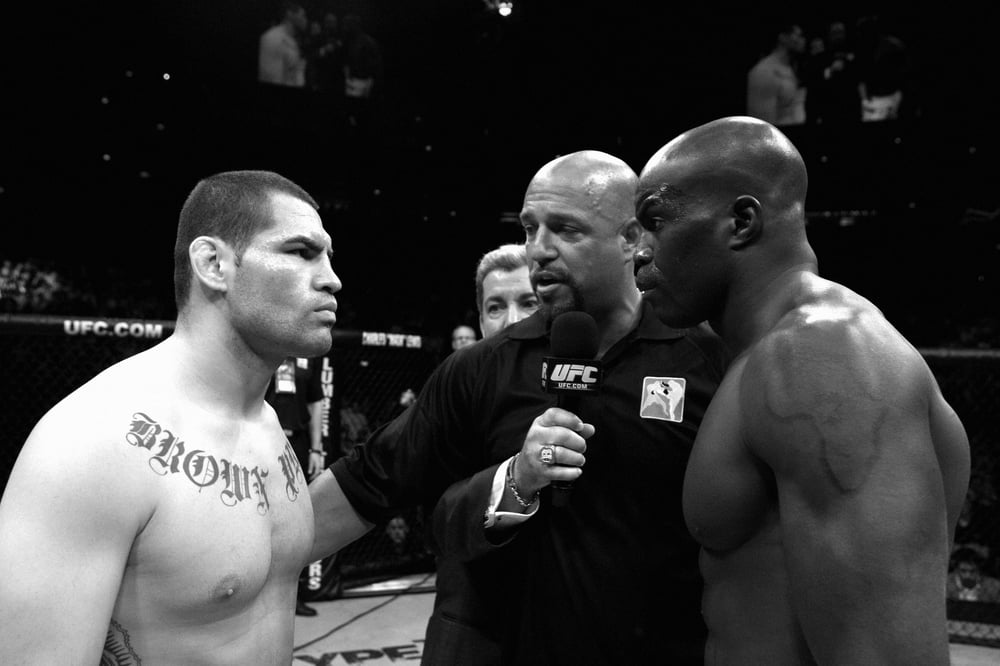
Nothing New, But More to Come
Clearly, massive human beings fighting in the cage or ring is nothing new. In addition to the likes of Lesnar, Shane Carwin and Antonio Silva (6’4 267lb) there are some real monsters among the cast of the current season of The Ultimate Fighter. Already an overwhelming TV ratings success, the show has attracted plenty of publicity due to the presence of Kimbo Slice and a crew of former NFL players in the house. And two of them – Marcus Jones and Wes Shivers – are particularly immense. Shivers is quite the physical specimen but is very raw as a fighter and, considering the spotlight he finds himself in, still very new to the sport.
A scary 6’6” former Tampa Bay Buccaneer defensive lineman, Jones is 4-1 as a fighter and could be one to watch. Carving out a genuinely successful NFL career as the one Jones enjoyed takes tremendous perseverance, training and skill. Competition is cut-throat and thanks to injuries and impatient coaching staff, the average playing career lasts less than five years.
While there are plenty of more minor football leagues for players to try, it’s a major step down in pay and prestige. Inevitably, with examples like Jones to follow and the continual growth in MMA’s popularity, not to mention pay, other former NFL players (particularly the kind of mastodons who battle on the offensive and defensive lines in today’s NFL) are going to try their hand at fighting, as will men who might have once fancied a career as a pro wrestler, some of the heftier basketball players and plenty more from other sports.
Given the size of today’s athletes, MMA can expect an influx of massive, quick, athletic heavyweights over the next few years. Maybe in a few years time it really will be necessary for promoters to dust off that super heavyweight division.
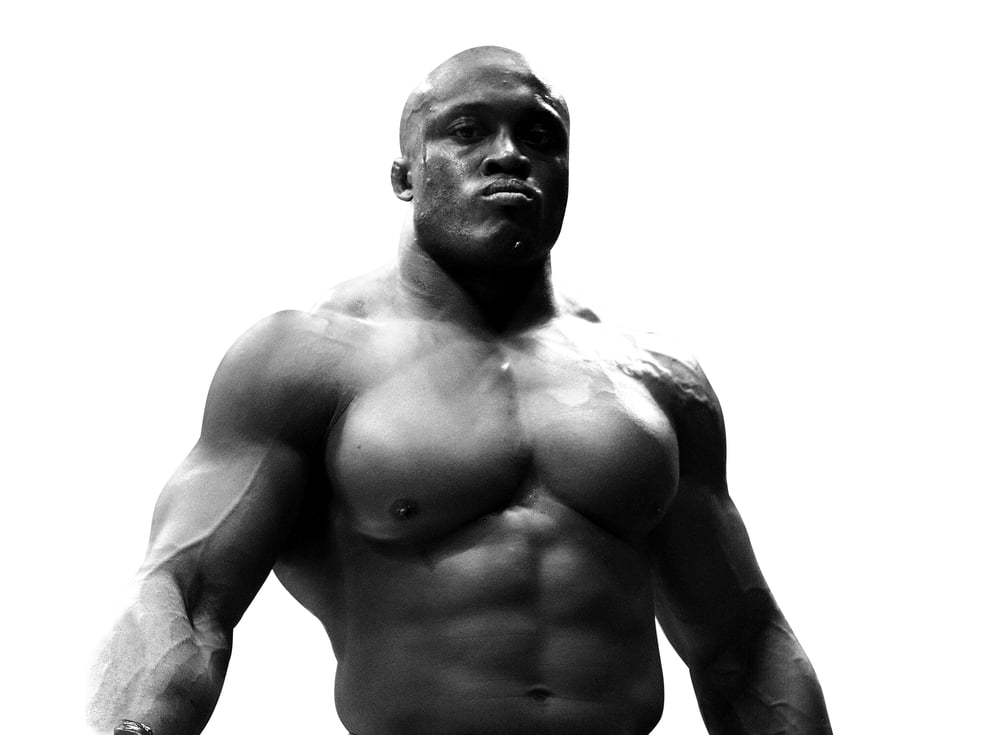
They Might Be Giants – Four Monsters to Watch Out For
At 24, Todd Duffee has already had two eye-catching fights in his 5-0 career. Standing 6’3”, Duffee is an explosive 250lb’er who now holds the official UFC record for the fastest-ever KO thanks to his 7-second win over Tim Hague at UFC 102. That was quite the big stage debut, but even more impressive was his manhandling of tough veteran Assuerio Silva last year. Bullying Silva against the fence and tiring him out, Duffee finished him off with some booming ground n’ pound. Duffee looks like a genuine star-in-the-making.
Following in the rather large footsteps of another near 7-foot Dutchman in Semmy Schilt, 21-year-old Stefan Struve made his MMA debut at 17 and has put together an impressive 17-3 professional record. One of Europe’s best heavyweight prospects, Struve is far more than a lanky giant who keeps people at a distance and punishes them from there. While he uses his size and reach well, the most notable things about Struve are his submission skills (13 wins via tap out) and his ability to take punishment and come back to win, as he did in his gripping UFC 99 war with Dennis Stojnic.
Former WWE Bobby Lashley boats an immense physique and amateur wrestling background. So far in his short MMA career the 33-year-old has impressed and disappointed in roughly equal measures. Three first-round wins, over admittedly feeble opposition (including Bob Sapp), and a sluggish, question-raising decision over a bloated light heavyweight have left fans wondering just how good Lashley can be. But he’s a big (250lb), fast, athletic fighter with the physical tools to do very well so long as age doesn’t catch up with him too quickly.
2004 and 2008 US Olympic wrestler Daniel Cormier made a winning MMA debut in September after just five weeks of training at San Jose’s American Kickboxing Academy. At 30 years old and 5’10”, Cormier is hardly a youngster, nor does he fit the ‘giant’ profile entirely. Still, he’s a very, very solid 250lb who, unlike plenty of heavyweights, could no more fight at 205 than he could flap his meaty arms and fly to the moon, especially after his 2008 Olympic hopes were destroyed by health problems related to excessive, long-term weight-cutting. Legitimately one of the best wrestlers to ever compete in MMA, Cormier could well develop into a very dominating, very successful fighter.

The World’s Strongest Man Enters the Ring
Five-time world strongman champion Mariusz ‘Pudzian’ Pudzianowski has announced his intention to don the four-ounce gloves. A longtime martial artist and fight fan, the 6’1” 315lb Polish strength athlete will go head-to-head with boxer-turned-mixed martial artist Marcin Najman on December 11. The bout is being hosted by top Polish MMA promotion, KSW.
While all manner of athletes have tried their hand at MMA in the past (including Jose Canseco and former NFL wide receiver Johnnie Morton) pretty much all of them have failed miserably. Can Pudzianowki, one of the biggest athletes to ever make the crossover, silence the naysayers and prove that he belongs in the cage?
Why MMA?
I like how MMA combines all disciplines. I really enjoy the technical side of it – it’s a sport where the small can defeat the big.
Is this a one-time venture? Or is it the beginning of a new career?
No, it’s not a one-time venture! I’ve always been interested in fighting. I’ve accomplished everything I could in strongman competitions, so I’m looking for a new calling.
There’s no doubt that you’re the strongest man in MMA. But do you have the cardio to go two, five-minute rounds?
I guarantee I’ll do whatever it takes to build up the necessary cardio. When I put my mind to something, it gets done.
Do you think your muscles will play a factor in the fight?
There are advantages and disadvantages to having big muscles. But who knows? We’ll see on fight day!
For more info go to www.konfrontacja.com
Here Be Giants – Four of the Biggest, and the Best
Brock Lesnar may be one of the best athletes on the planet. The current UFC heavyweight champion took the NCAA Division I wrestling title as a heavyweight in 2000, improving on his second-place finish the previous year. Four years of college wrestling saw him amass a superb 106-5 record. Lesnar then went on to master the athletic performance art of pro wrestling, before coming impossibly close to an NFL career despite no college football experience, and then moving on to his fourth sporting adventure, MMA – which he happens to be exceptionally good at. Blessed with stunning power (look at the way he floored Frank Mir, Heath Herring and Randy Couture), great reach and underrated technique, Lesnar is a shockingly good striker. He’s also impossibly fast for a man of his size (during his NFL training camp assessments he weighed in at 295lb, and ran the 40-yard dash in 4.79 seconds) and is meaner than a sack full of wolverines. Lesnar also knows, better than all but a few in MMA, how to sell a fight. Is it any wonder he’s one of the biggest stars the sport

The Shane Carwin we see in the Octagon is noticeably smaller than the Shane Carwin who made his MMA debut in late 2005 and went on to amass an 8-0 record before signing a UFC contract. In his pre-UFC days, the 34-year-old was absolutely terrifying. Usually over 280lb, Carwin was an obliterating presence, more akin to a force of nature than a mere human being. Now, slimmed down to make 265, Carwin is still a frightening proposition whose three UFC fights have lasted a combined two minutes and 24 seconds. Putting his gigantic XXXXL paws to good use, Carwin has destroyed Christian Wellisch, flattened Neil Wain and laid waste to heavyweight contender Gabriel Gonzaga. About as elusive as a bus, Carwin takes too many shots, figuring since he can take them and shrug them off there’s no point defending, but so far his simplistic strategy has paid off perfectly. And if he’s struggling too much on his feet, the Division II NCAA heavyweight champion can always put his superb wrestling to good use.
Former EliteXC heavyweight champion, Antonio Silva, is a fighter of literally giant proportions. Born with acromegaly, a life-shortening, feature-altering condition commonly known as ‘gigantism’, Silva has had the problem corrected but remains a distinctively massive 6’4” fighter who just about makes the 265lb heavyweight limit (and is closer to 280lb when the bell rings). At his size, Silva is shockingly fast, coordinated and fluid, both on the mat and on his oversized feet. Beaten just once in 14 professional fights, the American Top Team member has the potential to be one of the sport’s best ‘real’ heavyweights and would seem like a natural future addition to the UFC’s increasingly big roster.
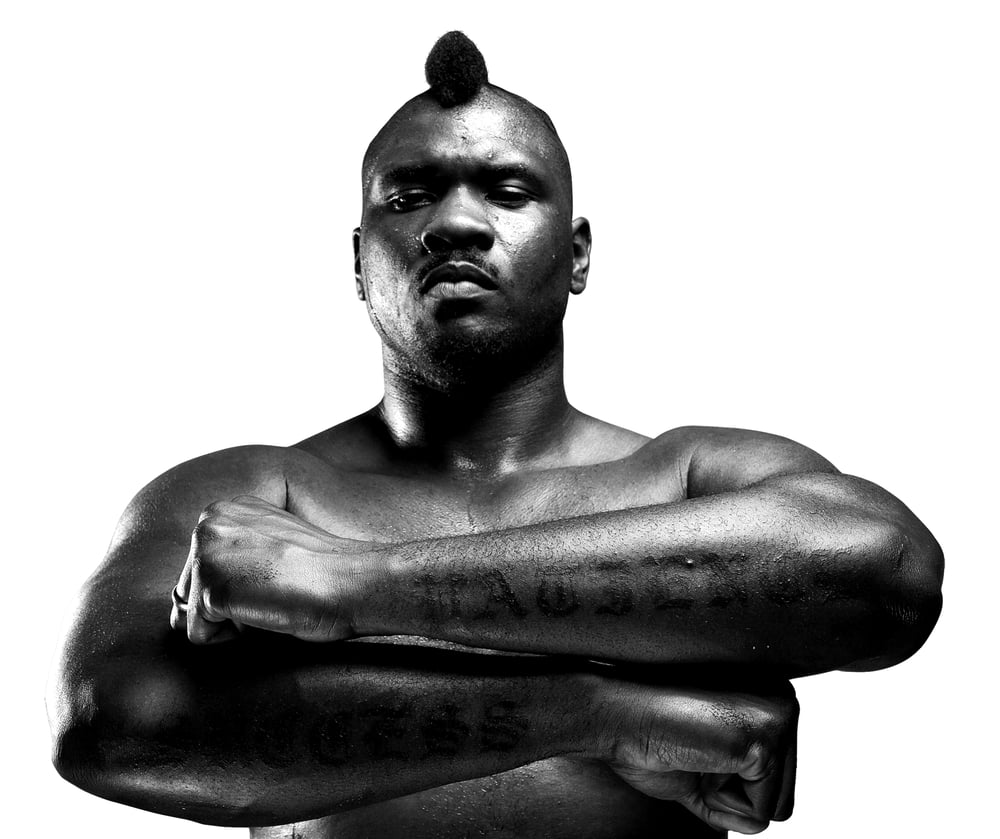
Unbeaten at 10-0, and finishing every one of his opponents with his fists, 28-year-old Brett Rogers stands 6’5” and just about ducks under the 265lb heavyweight limit. An imposing, aggressive fighter, ‘the Grim’ made his name with crushing EliteXC wins over James Thompson and Jon Murphy. Rogers really hit the big time with his 22-second TKO of former UFC heavyweight champion Andrei Arlovski in June. A good wrestler with real killer instinct and plenty of power, Rogers looks like being a force in the heavyweight division.










